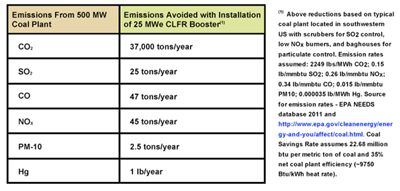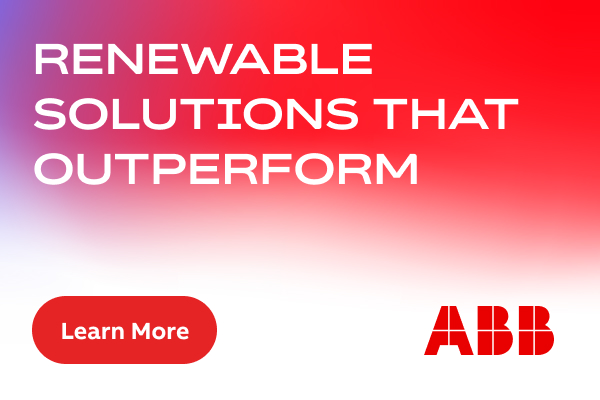Solar Power Augmentation Projects Boost CSP Industry
 After years of being “poised” for rapid growth, the opportunities for concentrated solar power (CSP) are multiplying fast. Analysts expect that over the next decade, there will be a 20-fold increase in CSP generation, with several factors driving the increased interest.
After years of being “poised” for rapid growth, the opportunities for concentrated solar power (CSP) are multiplying fast. Analysts expect that over the next decade, there will be a 20-fold increase in CSP generation, with several factors driving the increased interest.
First, understanding of the true cost of energy continues to evolve—to the benefit of all solar power producers. The traditionally measured cost of producing solar power has decreased but, increasingly, analysts factor in volatile fuel prices and the environmental costs of such things as land use, water use, and fossil fuel emissions.
Second, CSP offers tremendous opportunities for local industrial development in a fragile economy. Many solar steam generators are made with standard materials, so they can be rapidly deployed using low-cost, locally sourced manufacturing processes and materials.
Third, increased investment from global energy leaders breaks down barriers and builds trust. CSP companies can now reliably offer the full package of necessary services and guarantees—from technology leadership and engineering, procurement, and construction (EPC) services to operation and management expertise.
Fourth, CSP technologies are now mature, with more than one gigawatt (GW) of installed capacity.
Perhaps most importantly, demand continues to grow alongside the pressure on utilities to reduce emissions in the nearer term, without a significant capital investment. CSP technologies can effectively address both of these concerns, offering cost-effective and quick-to-market opportunities for utilities to increase their fossil-fuel power plant output without any added emissions. Also, because power augmentation projects using CSP technologies can be deployed rapidly, they’re the next important leap forward for the industry in bridging the carbon gap.
Advantages of CSP for power augmentation
Solar power augmentation is the result of utilities integrating CSP “boosters” into the steam cycle of existing fossil fuel, geothermal, and biomass-powered plants. Utilities choose CSP out of a need to either cleanly boost power plant output to meet increased demand, or to offset fossil fuel consumption and reduce emissions. Either way, power augmentation with CSP delivers a number of additional benefits, including the following:
1. The high-pressure, superheated steam of many CSP solutions readily and quickly integrates into the steam cycle of existing plants. Some boosters can be built in as little as nine months or less.
2. Often CSP boosters can also be built on land that power companies already own and control. For those companies that face land constraints, Compact Linear Fresnel Reflector (CLFR) technology is the most land-efficient solar solution.
3. The leveraging of existing infrastructure can result in a levelized cost of electricity that’s significantly lower than similar sized PV plants, depending upon the CSP technology used.
4. With only an incremental investment, power plant operators can maximize the value of existing plant assets. And, they can do this without incurring the major capital expense or long lead-times typically associated with building a new power plant.
5. In some regions and states, environmental credits and/or meeting renewable portfolio standards (RPS) increase the value of these investments.
Case studies: real-world proof
In 2010, Florida Power and Light went online with a 75-megawatt (MW) trough CSP booster to work with a 1,200 MW combined-cycle power plant near Indiantown, Florida. And in 2011, Abengoa brought two 20 MW trough CSP boosters online at new gas-fired, combined-cycle power plants in Morocco and Algeria. Together, these projects generate just over 240 GWhe/year of solar energy, while reducing greenhouse gas emissions by more than 121,000 tons/year.
Success builds on success. Tucson Electric Power (TEP) is working in partnership on a CSP booster project slated to go online in 2012, which will provide a 5 MW solar addition to TEP’s coal-fired, 400 MW H. Wilson Sundt Generating Station in Tucson. The CLFR booster project will allow Sundt’s dual-fueled Unit 4 to reliably produce the same amount of electricity during peak daylight periods as it does now, while reducing the use of up to 3,600 tons of coal per year or up to 46 million cubic feet of natural gas.
Yet another example involves the construction on a 44 MW CSP addition to CS Energy’s existing 750 MW coal-fired Kogan Creek Power Station in Australia. When it becomes operational in 2013, that CLFR booster will avert 35,600 tons of CO2 emissions each year, and will be the world’s largest coal/solar augmentation project. Both the TEP and Kogan Creek booster projects, and others like it, will create local construction and operations and maintenance jobs, while sourcing local materials and manufacturing.
Leaping forward for the future
These projects provide compelling evidence that power augmentation using CSP technology offers utilities a cost-effective, reliable strategy to quickly boost capacity of fossil-fired power plants, while meeting sustainability goals and renewable portfolio standards. CSP boosters also reduce fuel, emissions and operations and maintenance costs for power plant operators.
As CSP providers deliver those benefits, they will be making a dramatic and long overdue stride forward for the entire CSP industry.
John Robbins is the senior director of North American Sales at AREVA Solar.
AREVA Solar, a global Compact Linear Fresnel Reflector solar thermal technology provider, is partnering with Tucson Electric Power and the Australia-based CS Energy on two new solar booster projects to increase the output of each utility’s fossil-fired power plant without added emissions. For more information, visit www.areva.com/EN/solar-220/areva-solar.html.
AREVA Solar
www.areva.com
Author: John Robbins
Volume: March/April 2012










.jpg?r=2517)

